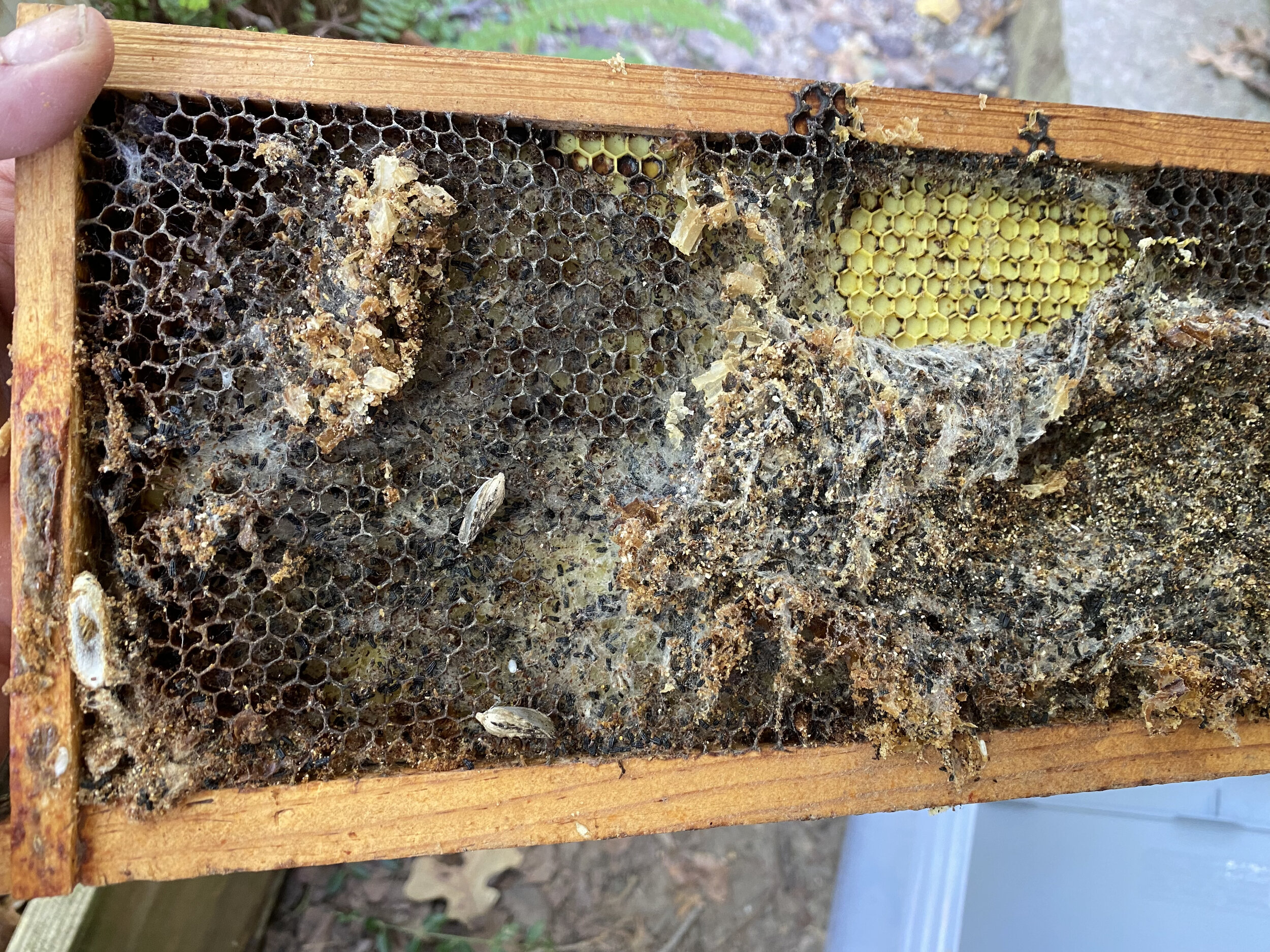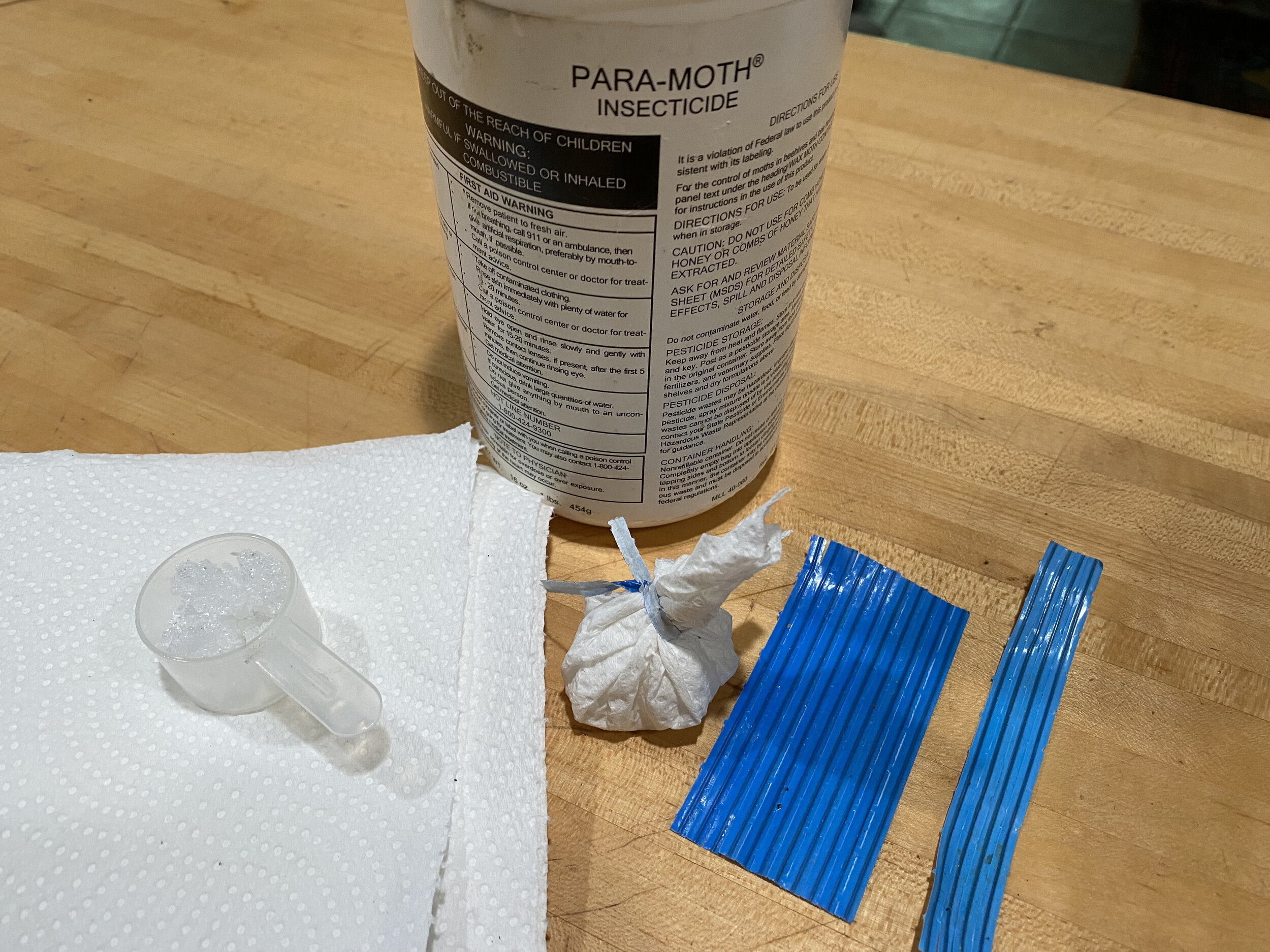Wax Moth Protection
/Paper towel pieces with Para-Moth crystals ready to keep wax frames free of wax moths. (Photo by Charlotte Ekker Wiggins)
Wax Moth Protection
There was a time when wax moths were the main challenge for beekeepers. Today wax moths can be an early warning that the colony is not healthy since wax moths are opportunistic and move in when a colony is struggling.
There are two wax moth species, the Greater wax moth (Galleria mellonella) and the Lesser wax moth (Achroia grisella). The Lesser wax moth looks like a smaller, juvenile version of the Greater wax moth.
Both species eat beeswax, particularly unprocessed wax, pollen, remains of larval honey bees, honey bee cocoon silk and enclosed honey bee feces found on brood cells walls.
Wax moth cocoon, left, two adult wax moths and the frass they leave behind.(Photo by Charlotte Ekker Wiggins)
Both Greater and Lesser wax moths will damage wax frames in storage. Since wax is more valuable than honey, beekeepers want to protect the waxed frames for reuse.
One of the easiest ways to protect wax frames is to use Para-Moth crystals.
Making Para-Moth crystal packets to put into totes to protect wax frames. (Photo by Charlotte Ekker Wiggins)
Cut paper towels in half and place one scoop of Para-Moth crystals in the paper towel piece center.
Pull the paper around the crystals and tie with a bread tie.
Place inside totes full of wax frames to keep them safe from wax moth damage.
Make sure all bees are out or the Para-Moth will kill bees.
To use the stored wax frames, remove the remaining Para-Moth crystals and air out the wax frames for a good week before placing in the hives.














